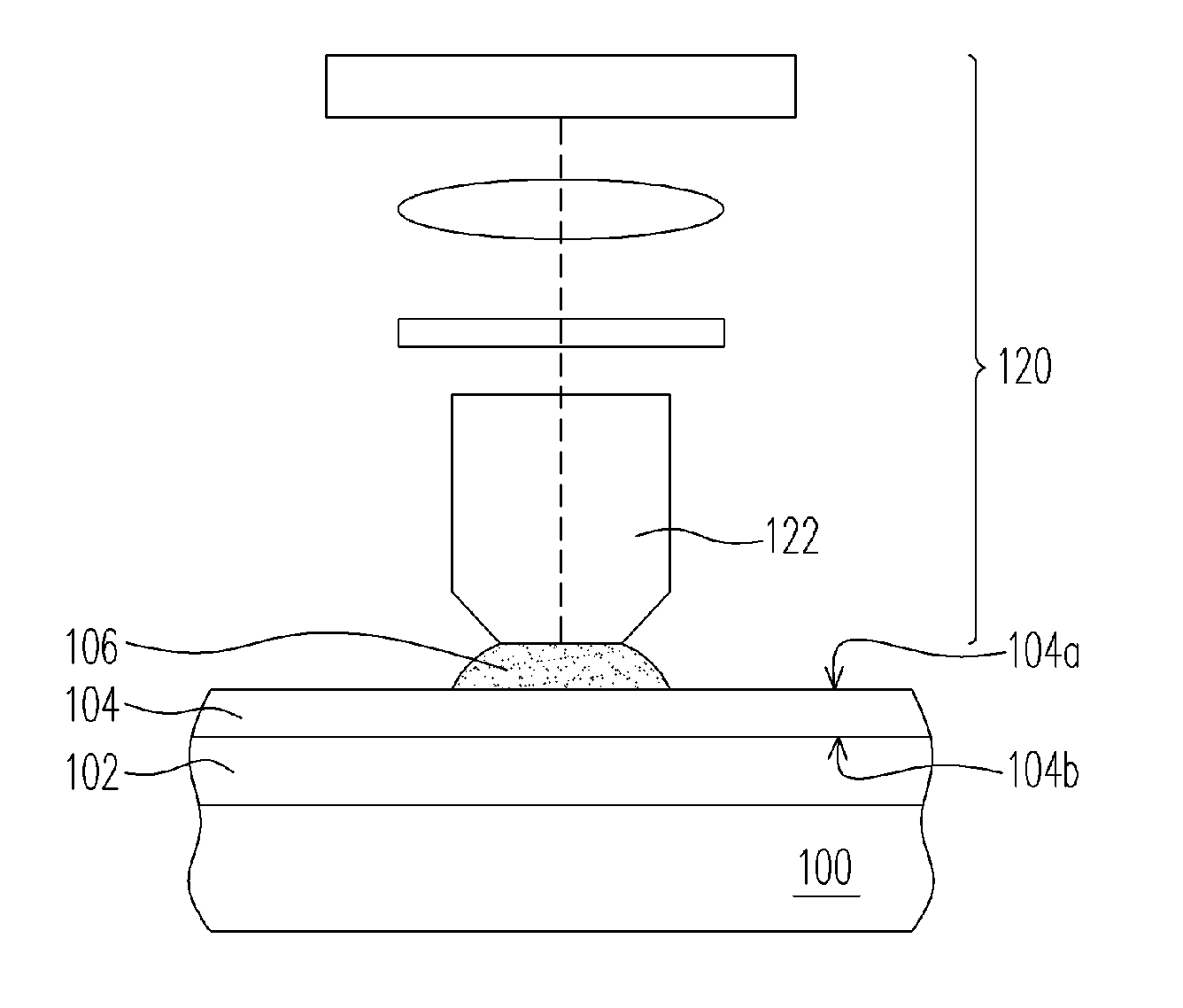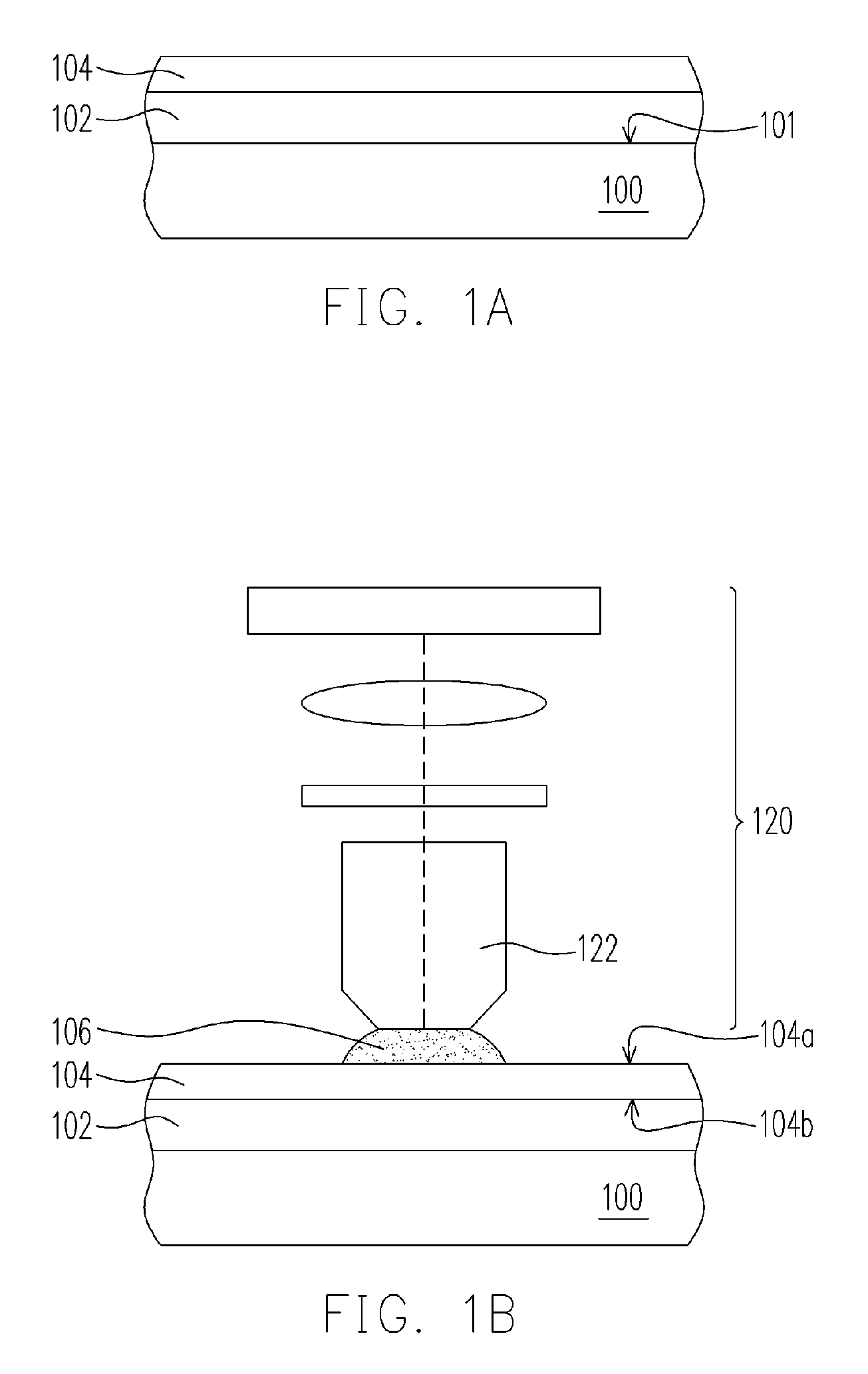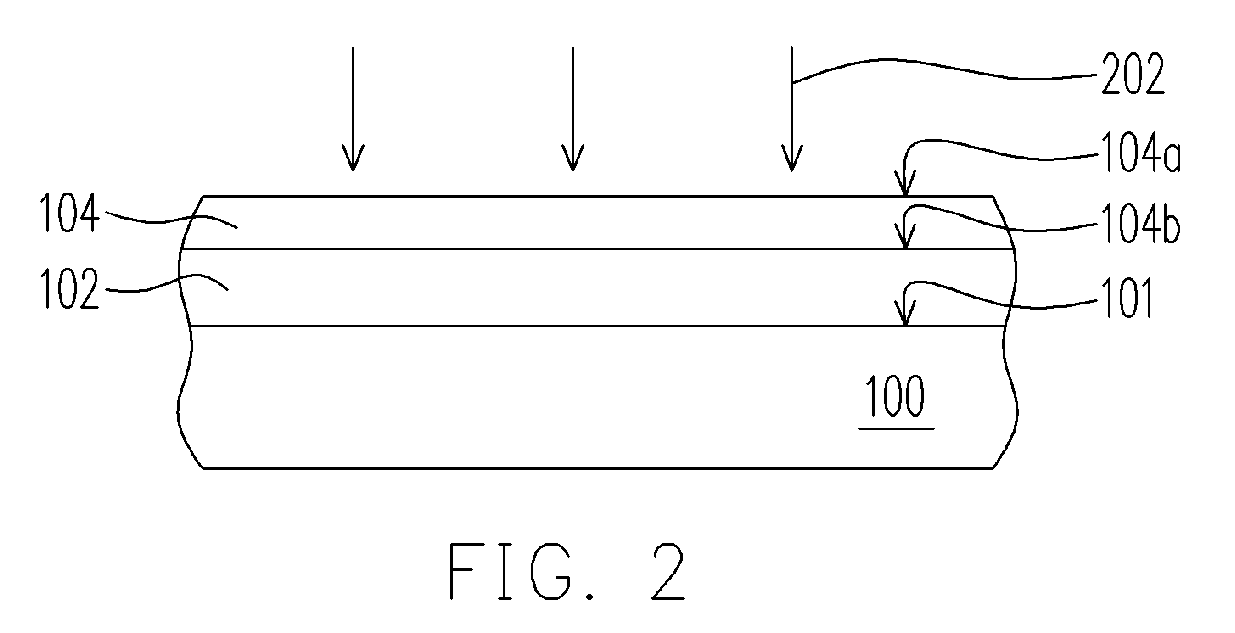Method for forming material layer between liquid and photoresist layer
a technology of liquid and lithography, applied in the field of forming a material layer, can solve the problems of lithography defects, certain technical problems still exist, etc., and achieve the effect of avoiding the reaction between the photoresist and the liquid
- Summary
- Abstract
- Description
- Claims
- Application Information
AI Technical Summary
Benefits of technology
Problems solved by technology
Method used
Image
Examples
Embodiment Construction
[0015]FIGS. 1A-1B are cross-sectional views of the process steps for forming a material layer according to one preferred embodiment of this invention.
[0016] Referring to FIG. 1A, a semiconductor substrate or a semiconductor wafer 100 having a plurality of different material layers (not shown) thereon is provided. A photoresist layer 102 is formed over the active surface 101 of the wafer 100 by, for example, spin-coating. The photoresist layer 102 can be a positive photoresist layer or a negative photoresist layer. Afterwards, a material layer 104 is formed on the photoresist layer 102 and covering the photoresist layer 102. The material layer 104 can be formed by spin-coating or deposition, for example. Preferably, if the photoresist layer 102 is a 193 nm photoresist layer, the material layer 104 can be a 248 nm photoresist layer, for example. Alternatively, the material layer 104 may be comprised of a top anti-reflection coating (ARC) layer and the top ARC layer is made of fluid o...
PUM
| Property | Measurement | Unit |
|---|---|---|
| adhesion | aaaaa | aaaaa |
| time | aaaaa | aaaaa |
| wettability | aaaaa | aaaaa |
Abstract
Description
Claims
Application Information
 Login to View More
Login to View More - R&D
- Intellectual Property
- Life Sciences
- Materials
- Tech Scout
- Unparalleled Data Quality
- Higher Quality Content
- 60% Fewer Hallucinations
Browse by: Latest US Patents, China's latest patents, Technical Efficacy Thesaurus, Application Domain, Technology Topic, Popular Technical Reports.
© 2025 PatSnap. All rights reserved.Legal|Privacy policy|Modern Slavery Act Transparency Statement|Sitemap|About US| Contact US: help@patsnap.com



